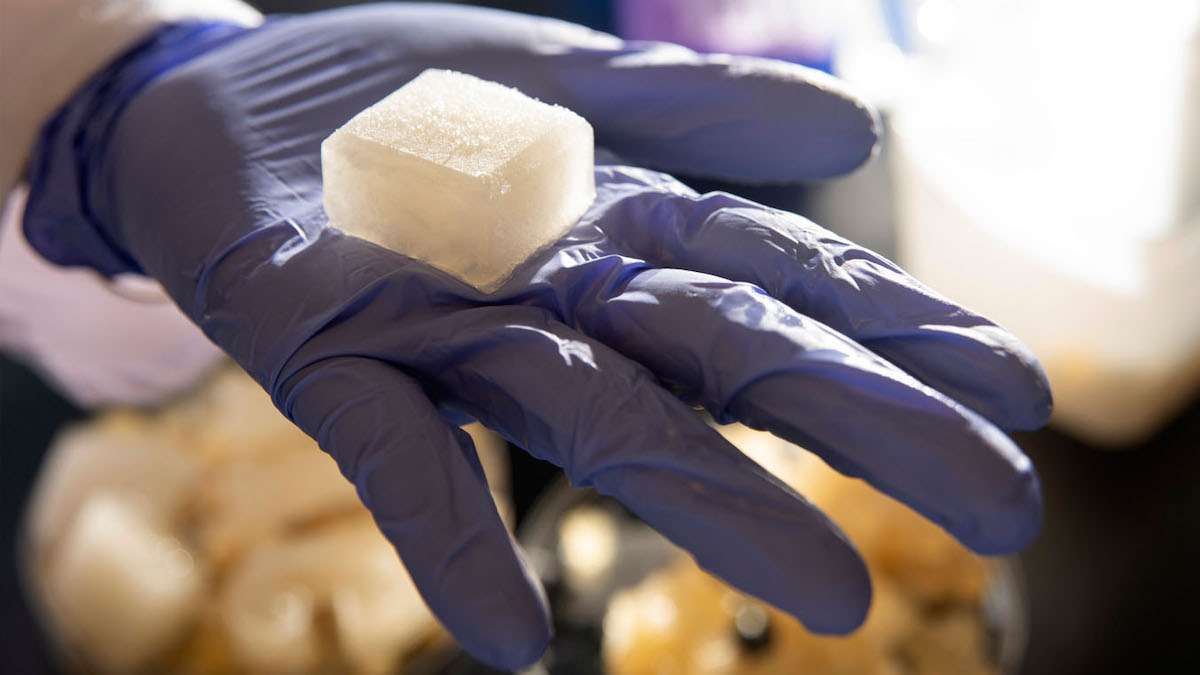Create a free profile to get unlimited access to exclusive videos, sweepstakes, and more!
Want to know something really cool? There’s now a jelly ice cube that won’t melt
Freezing just got a whole lot cooler with a new type of jelly ice that resists melting, mold, and pathogens.

The problem with using ice cubes or ice packs to keep things cold is that either of those might melt or, worse, grow mold or breed pathogens, but that’s about to be put on ice.
Freezing just got a whole lot cooler with a new type of jelly ice developed by researchers at UC Davis. Not only does it look like the type of gelatin you’d eat for dessert (please don’t eat it), but this weird gelatinous substance is antimicrobial and resists melting and mold. Made of 90% water, it can be shaped into anything and is also reusable and biodegradable. Just rinse and reuse. It could revolutionize how we keep stuff cold without a fridge.
Imagine being able to put something on ice for 13 hours and just forget about it, with no microbes seeping into the melt water. It only looks harmless until it’s under a microscope. That was the problem that kept researcher Gang Sun up at night, until he thought of a way to create something solid that could be reused and would resist melting and micro-critters trying to get in. He coauthored a study recently published in Sustainable Chemistry and Engineering.
“The process used here is similar to the regular preparation of ice or ice packs. It contains 90 percent water in a gel form,” Sun told SYFY WIRE. “For stabilization, it also contains natural polymers with edible ingredients.”
That still doesn’t mean you should eat it — but it is safer for whatever you will eat later but have to stash in a cooler for a while. Melt water only looks innocent. The massive amounts of it that come from fish processing and other large-scale operations that need ice end up swarming with pathogens that can sneak into unexpected hiding places. Even plastic ice packs that look harmless are susceptible to growing mold. The jelly ice is also plastic-free, another plus since plastics that degrade into microplastics can be havens for pathogenic bacteria to propagate.
What these “ice cubes” actually are is a form of hydrogel. Hydrogels are now being used for everything from building soft robots to replicating human skin. The challenge that Sun and his team had to overcome was that prototypes of the jelly cubes fell apart because of structural instabilities, especially when they thawed out after being frozen for a while. As the development of the prototypes continued, they were subjected to cycles of freezing and thawing to test whether they could endure being reused. They only degrade when their life is over.
“These natural polymers break down without causing damage to the environment, because they are totally biodegradable and compostable,” said Sun.
Jelly ice also had to undergo testing to see how much water it could handle without melting like water. The final version ended up stable with a structure that could really hold up, even with a higher water content than the human body. It can be frozen and thawed at least 10 times before you can toss it in the compost pile. Sun and his team also think that the stability of connections between polymers in the hydrogel is partially a result of fast freezing and gradual thawing. There could eventually be an even more sustainable way to make ice that isn’t ice.
“Some of the natural polymers could be replaced by agricultural wastes or byproducts that act as coolants,” he said.
The only issue left is that it will definitely need a “do not eat” warning label.



























